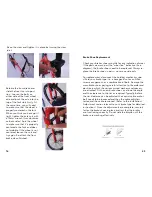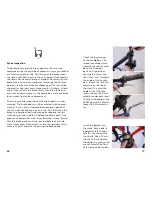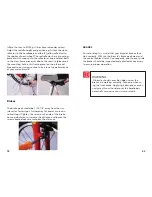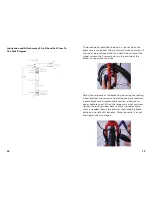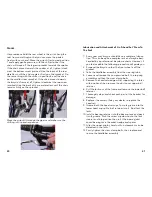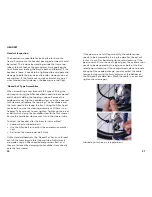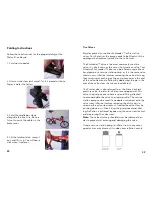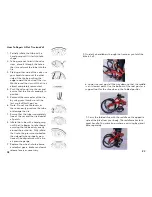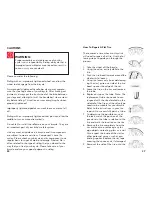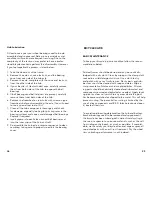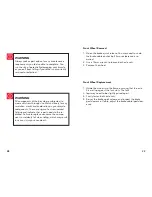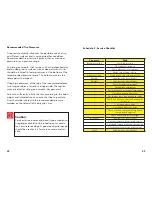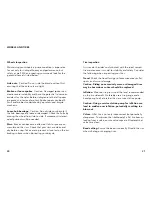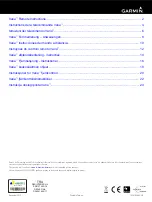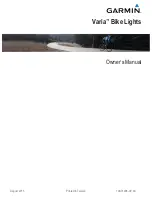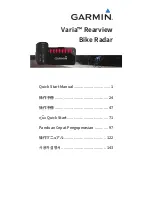
Axle nuts:
Caution: Do not ride the bicycle without fi rst
ensuring that the axle nuts are tight.
Broken or loose spokes
: Caution: Damaged spokes can
create severe instability and have the potential to cause an
accident for the rider. Before riding ensure that all spokes
are present, intact and are taut. Spoke repairs can be dif-
fi cult and are best undertaken by a professional bicycle
mechanic.
Loose hub bearings:
Caution: Do not ride your bicycle if
the hub bearings are loose or damaged. Check the hubs by
moving the wheel from side to side. If movement is detect-
ed adjustments will be needed.
Rims:
Brakes can become ineffective if dirt or grease ac-
cumulate on the rims. Check that your rims are clean and
dry before using. Take care to prevent oil contact on the rim
braking surfaces when lubricating your bicycle.
Wheels Inspection
Maintaining your wheels in prime condition is imperative
for not only for riding effi ciency and performance, but
safety as well. When inspecting your wheels look for the
potential hazards listed below.
WHEELS AND TIRES
30
Tire inspection
As tires are the rider’s only contact with the road, correct
tire maintenance is crucial for stability and safety. Consider
the following when inspecting your tires:
Tread:
Check the tread for signs of excessive wear or fl at
spots, and cuts or damage.
Caution: Riding on excessively worn or damaged tires
may be hazardous so tires should be replaced
.
Infl ation:
Maintain tire pressure at the level recommended
on the tire sidewalls. Preferably use a tire gauge and a
hand pump to infl ate rather than a service station pump.
Caution: Using a service station pump for infl ation can
lead to sudden over infl ation, potentially resulting in a
blow out.
Valves:
A fl at tire is not only inconvenient but potentially
dangerous. To minimize the likelihood of a fl at tire from air
leaking from a valve, ensure valve caps are fi tted and that
valves are clean.
Bead setting:
Ensure the bead is correctly fi tted in the rim
when infl ating or changing tires.
31

